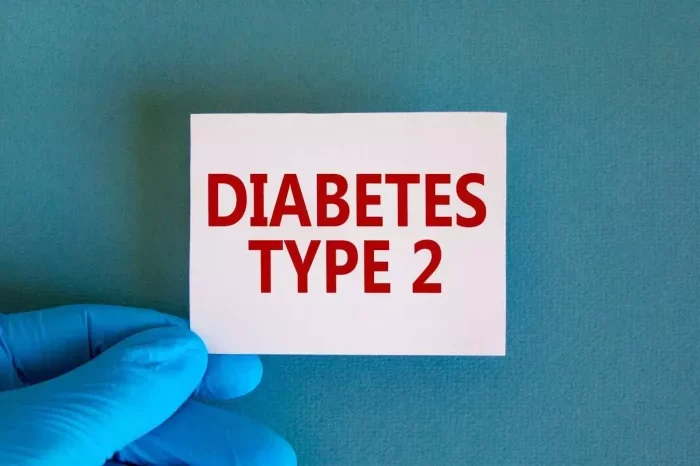A diabetic diet is essential for managing diabetes effectively and maintaining overall health. Whether you have Type 1 diabetes, Type 2 diabetes, or prediabetes, the right dietary choices can help control blood sugar levels, reduce complications, and improve quality of life. This comprehensive guide explores the components of a diabetic diet, offering practical advice and tips for incorporating healthy eating habits into your daily routine.
Understanding Diabetes and Diet
Diabetes is a chronic condition characterized by elevated blood glucose levels due to issues with insulin production or function. Insulin is a hormone produced by the pancreas that helps regulate blood sugar by allowing glucose to enter cells for energy.
Types of Diabetes
Type 1 Diabetes
Description: An autoimmune condition where the body’s immune system attacks insulin-producing cells in the pancreas.
Diet Focus: Managing carbohydrate intake and insulin doses to maintain stable blood sugar levels.
Type 2 Diabetes
Description: A condition where the body becomes resistant to insulin or does not produce enough insulin.
Diet Focus: Improving insulin sensitivity through weight management, healthy eating, and regular physical activity.
Prediabetes
Description: A condition where blood sugar levels are higher than normal but not yet high enough for a diabetes diagnosis.
Diet Focus: Preventing the progression to Type 2 diabetes through lifestyle changes and a balanced diet.
Key Components of a Diabetic Diet
A well-balanced diabetic diet includes a variety of foods that help regulate blood sugar levels while providing essential nutrients. Here are the primary components of a diabetic diet:
1. Carbohydrates
Carbohydrates directly impact blood glucose levels, making their management crucial for diabetes control.
Types of Carbohydrates
Simple Carbohydrates: Found in sugary foods and drinks, they cause rapid spikes in blood sugar levels.
Complex Carbohydrates: Found in whole grains, legumes, and vegetables, they are digested more slowly and provide a steadier release of glucose.
Choosing the Right Carbohydrates
High-Fiber Foods: Foods rich in fiber, such as whole grains, fruits, and vegetables, help slow the absorption of glucose and improve blood sugar control.
Glycemic Index (GI): Foods with a low GI, such as beans and oats, have a slower impact on blood sugar levels compared to high-GI foods like white bread and sugary cereals.
Portion Control
Description: Monitoring portion sizes helps manage carbohydrate intake and prevents blood sugar spikes.
Purpose: Helps balance blood glucose levels and maintain a healthy weight.
2. Proteins
Proteins are vital for maintaining muscle mass and overall health. They have minimal impact on blood glucose levels, making them a beneficial component of a diabetic diet.
Sources of Protein
Lean Meats: Chicken, turkey, and lean cuts of beef or pork.
Fish: Rich in omega-3 fatty acids, such as salmon and trout.
Plant-Based Proteins: Beans, lentils, tofu, and nuts.
Protein in Meals
Description: Including a source of protein in each meal can help stabilize blood sugar levels and keep you feeling full longer.
Purpose: Supports muscle health and reduces the risk of blood sugar spikes.
3. Fats
Fats are essential for overall health, but it’s important to choose healthy fats and limit unhealthy ones.
Healthy Fats
Unsaturated Fats: Found in olive oil, avocados, nuts, and seeds.
Omega-3 Fatty Acids: Found in fatty fish, flaxseeds, and walnuts.
Unhealthy Fats
Saturated Fats: Found in red meat, butter, and full-fat dairy products.
Trans Fats: Found in many processed foods and baked goods.
Balancing Fat Intake
Description: Moderation is key to ensuring that fats contribute to overall health without negatively affecting blood sugar levels.
Purpose: Supports heart health and helps manage weight.
4. Fiber
Fiber is a type of carbohydrate that aids in digestion and helps regulate blood sugar levels.
Types of Fiber
Soluble Fiber: Found in oats, apples, and beans; helps lower cholesterol and slow glucose absorption.
Insoluble Fiber: Found in whole grains and vegetables; supports digestive health.
Incorporating Fiber
Description: Aim for at least 25-30 grams of fiber per day through a variety of foods.
Purpose: Improves blood sugar control and supports overall digestive health.
5. Vitamins and Minerals
Vitamins and minerals play a role in overall health and can impact diabetes management.
Essential Nutrients
Vitamin D: Important for bone health and insulin function. Sources include fortified dairy products and sunlight exposure.
Magnesium: Supports blood sugar control and can be found in leafy greens, nuts, and whole grains.
Balancing Nutrients
Description: A balanced diet that includes a variety of fruits, vegetables, and whole grains helps ensure adequate nutrient intake.
Purpose: Supports overall health and aids in managing diabetes-related complications.
Meal Planning for Diabetes
Effective meal planning is crucial for managing diabetes. Here are some strategies to help create a balanced and diabetes-friendly meal plan:
1. Carbohydrate Counting
Understanding Carbohydrates
Description: Learn how to count carbohydrates and understand how they affect blood sugar levels.
Purpose: Helps in managing insulin doses and making informed food choices.
Tools and Resources
Description: Use food labels, nutrition apps, and meal planning tools to track carbohydrate intake.
Purpose: Facilitates better management of blood glucose levels.
2. Portion Control
Serving Sizes
Description: Use measuring cups, food scales, and portion control plates to manage serving sizes.
Purpose: Helps prevent overeating and maintains balanced blood sugar levels.
Balanced Meals
Description: Aim for balanced meals that include a combination of carbohydrates, proteins, and healthy fats.
Purpose: Supports stable blood sugar levels and overall health.
3. Timing of Meals
Regular Meals
Description: Eat regular meals and snacks to maintain steady blood sugar levels throughout the day.
Purpose: Helps prevent extreme fluctuations in blood glucose levels.
Avoiding Skipping Meals
Description: Skipping meals can lead to overeating later and unstable blood sugar levels.
Purpose: Consistent meal timing supports better blood sugar control.
4. Healthy Snacking
Choosing Healthy Snacks
Description: Opt for snacks that include a mix of protein, fiber, and healthy fats, such as nuts, yogurt, or vegetables with hummus.
Purpose: Provides sustained energy and helps manage hunger.
Portion Size
Description: Keep snack portions moderate to avoid excess calorie and carbohydrate intake.
Purpose: Supports weight management and blood sugar control.
Lifestyle Factors
In addition to dietary choices, several lifestyle factors play a role in managing diabetes effectively.
1. Physical Activity
Importance of Exercise
Description: Regular physical activity helps improve insulin sensitivity and support overall health.
Purpose: Enhances blood glucose control and helps manage weight.
Types of Exercise
Cardiovascular Exercise: Activities like walking, running, and cycling.
Strength Training: Activities like weight lifting and resistance exercises.
Flexibility Exercises: Activities like stretching and yoga.
2. Stress Management
Impact of Stress
Description: Stress can affect blood sugar levels and overall well-being.
Purpose: Managing stress helps maintain stable blood glucose levels and supports mental health.
Stress-Reduction Techniques
Description: Practices such as meditation, deep breathing exercises, and relaxation techniques can be beneficial.
Purpose: Supports emotional well-being and helps manage stress-related blood sugar fluctuations.
3. Regular Monitoring
Blood Glucose Monitoring
Description: Regular monitoring of blood glucose levels helps track the effectiveness of dietary and lifestyle changes.
Purpose: Provides insights into blood sugar patterns and helps make informed adjustments.
Consultation with Healthcare Professionals
Description: Regular check-ups with healthcare providers, including dietitians and endocrinologists, help ensure effective diabetes management.
Purpose: Provides personalized guidance and support for managing diabetes.
Conclusion
A diabetic diet is a crucial component of diabetes management, helping to regulate blood sugar levels and support overall health. By focusing on balanced carbohydrates, proteins, fats, fiber, and essential nutrients, individuals with diabetes can make informed dietary choices that contribute to better blood glucose control and improved quality of life.
Effective meal planning, portion control, and lifestyle factors such as physical activity and stress management further enhance diabetes management. Regular monitoring and consultation with healthcare professionals ensure that dietary and lifestyle strategies are tailored to individual needs and goals.
In summary, a well-structured diabetic diet, combined with healthy lifestyle practices, provides a foundation for managing diabetes and achieving optimal health.
Related topics:
What Foods Can Diabetics Eat Freely?



























